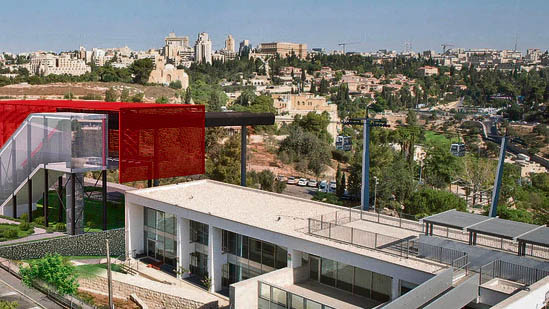Israeli-Canadian architect, Moshe Safdie, apparently hates cable cars — especially the one that’s currently being planned for the Western Wall in the Old City of Jerusalem.
Since its inception a few years back, the controversial project has faced several hurdles, including the withdrawal of a French construction company due to political sensitivities. Some commentators have noticed a “cable car revival” in Israel as the Jerusalem project is one of five active proposals in the country.
Online sources suggests the system will travel 1.4km and provide connectivity to four sites which includes Emek Refaim Train Station, Dung Gate, Mount of Olives and Gethsemane. The gondola is conceptualized to solve congestion problems in a hilly area with a weekly visitation of about 130,000 persons.
While we won’t deny the sociocultural challenges with this project, some of the statements released by Moshe Safdie on cable transit systems appear to be completely incorrect. The architect is quoted as saying, “As far as I know, and I’ve researched the topic, there is no other historical city in the world that allowed a cable car to be built within the visual core of its historical heritage.”
It is a little baffling to read this remark because a quick google search of the words “world heritage cable cars” will immediately reveal 37 aerial ropeways built in culturally sensitive UNESCO World Heritage Sites.
In the defense of Safdie however, there could be some nuance to his statement as it is uncertain how he defined “a cable car built within the visual core of its historical heritage”.
If we assume he’s referring to just cable cars built in cities with historical heritage, many of the 37 world heritage cable cars would by and large be eliminated. But nevertheless, even with a more stringent interpretation of an “heritage urban gondola”, several ropeways (described below) would still fall under this definition.
1. Koblenz Cable Car
The Koblenz Cable Car is perhaps the most famous “world heritage” urban gondola built in recent memory. The system was constructed to ease transportation challenges and replace bus service between the city core to the top of Ehrenbreitstein fortress (elevation difference of 112m over a length of 890m).
The cable car, which is noted for being built with the world’s most advanced aerial ropeway technology (3S / Tricable Detachable Gondola), was constructed in preparation for the 2011 Federal Horticultural Show (BUGA 2011) in Germany.
At a capacity of 3,800 persons per hour per direction (pphpd), it provides the equivalent hourly capacity of more than seventy 50-person buses! Since the system is constructed in the Upper Middle Rhine Valley UNESCO World Heritage Site — an area with over 2,000 years of history — the cable car was scheduled for disassembly four years after opening. In other words, the decommissioning was supposed to occur so that Koblenz would not lose its designation.
However, the system performed beyond expectations during the horticultural festival and it became an instant hit with locals. As such, system proponents collected over 100,000 signatures to keep the cable car. With this data, the City was then able to convince the International Council on Monuments and Sites (ICOMOS) to permit the extension of cable car operations until 2026.
To this day, the cable car has become a symbol of Koblenz and in June 2015, carried its ten millionth rider.
2. Sugarloaf Cable Car
When it comes to the heritage and history of Rio de Janeiro, there is perhaps nothing more recognizable than the Sugar Loaf Cable Car. The cable car operates within the Rio de Janeiro: Carioca Landscapes between the Mountain and the Sea World Heritage Site.
The system, built in 1912 travels adjacent to Guanabara Bay en route to the City’s most iconic hill, Sugar Loaf mountain, and the Christ the Redeemer statue.
Based on TripAdvisor reviews, the system is currently ranked the number one “Things to Do” in the Marvellous City! Historically, this ropeway was one of the first aerial passenger lifts ever built and has transported riders safely and efficiently for more than than 105 years.
If you speak to locals and tourists alike, it is not too farfetched to say that the cable car is intrinsically linked to the City’s cultural heritage.
3. Funivia di San Marino
San Marino, a city-state located entirely in Italy, is designated as a World Heritage Site and the last city-state in the country. Due to its strategic location at Mount Titano, San Marino has been in continual existence for over 700 years.
To enhance transport to the city centre and nearby commune of Borgo Maggiore, a 353m long cable car was opened in 1959. Despite being nearly 60 years old, the cable car remains one of the most popular ways to move around the city state and transports an average of 400,000 persons per year.
In fact, the system was so popular that it’s former 20-person cabins had to be upgraded to 50-person cabins in 1995!
— — —
As we’ve discussed before, we believe that detractors of ropeway technology are often misinformed.
And while everyone is entitled to their opinion, it is somewhat disheartening to find that such a well-known and intelligent architect could make such a rookie mistake when it comes to assessing gondolas.
Hopefully, Safdie is able to objectively assess the cable car proposal on its actual merits and shortcomings rather than spreading false information.





